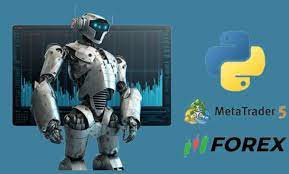In the world of foreign exchange (forex) trading, the allure of automation has led to the rise of forex robots, also known as expert advisors (EAs). These are software programs designed to trade currencies on behalf of traders, executing predefined strategies forex robot for human intervention. While the idea of letting a computer program handle your trades may seem appealing, it’s essential to understand the pros and cons before diving in.
The Pros of Forex Robots:
- Emotion-Free Trading: One of the most significant advantages of using forex robots is their ability to trade without emotions. Fear and greed are common emotions that can cloud a trader’s judgment, leading to irrational decision-making. Forex robots follow predefined rules strictly, eliminating emotional biases from the trading process.
- 24/7 Trading: Unlike human traders who need rest, forex robots can operate around the clock. They can monitor the markets and execute trades even when the trader is asleep or occupied with other tasks, providing the potential for continuous market exposure.
- Backtesting and Optimization: Forex robots can be backtested using historical data to assess their performance under various market conditions. Traders can optimize their strategies based on past data to improve their chances of success in live trading.
- Speed and Efficiency: Forex robots can execute trades with lightning speed, reacting to market movements in fractions of a second. This rapid execution can be crucial in high-frequency trading strategies where split-second decisions make a difference.
- Discipline and Consistency: By adhering strictly to predefined trading rules, forex robots can maintain discipline and consistency in their trading approach. This helps in avoiding impulsive decisions and sticking to the trading plan, which is essential for long-term success.
The Cons of Forex Robots:
- Over-Optimization: While backtesting and optimization are essential tools for refining trading strategies, there’s a risk of over-optimizing a forex robot. Over-optimization occurs when a strategy is fine-tuned to perform exceptionally well on past data but fails to deliver similar results in live trading due to changes in market conditions.
- Lack of Adaptability: Forex robots operate based on predefined algorithms, which may not adapt well to sudden changes or unexpected events in the market. Human traders can adjust their strategies in response to new information or evolving market conditions, whereas robots may struggle to do so effectively.
- Dependency on Market Conditions: Some forex robots perform well only under specific market conditions or during certain timeframes. They may struggle in volatile markets or during periods of low liquidity, leading to losses or underperformance.
- Technical Issues: Like any software, forex robots are susceptible to technical glitches, bugs, or connectivity issues. A malfunctioning robot could execute trades incorrectly or fail to execute them altogether, potentially leading to losses.
- Cost and Complexity: Developing or purchasing a forex robot can be expensive, especially if you opt for custom-built solutions or premium off-the-shelf products. Additionally, understanding and configuring the settings of a forex robot can be complex, requiring technical expertise.
Conclusion:
Forex robots offer the promise of automating trading tasks and potentially generating profits with minimal human intervention. However, they are not without their drawbacks. Traders considering using forex robots should weigh the pros and cons carefully and ensure they have realistic expectations regarding their performance.
Ultimately, while forex robots can be valuable tools in a trader’s arsenal, they should complement, rather than replace, human decision-making and oversight. A balanced approach that combines automation with human judgment is often the key to success in the dynamic and unpredictable world of forex trading.
